

|
HOME |
JOIN |
AUCTION |
NEWSLETTER |
EMAIL LISTS |
LIBRARY |
ABOUT US |
BYLAWS |
LINKS
ANNOUNCEMENTS |
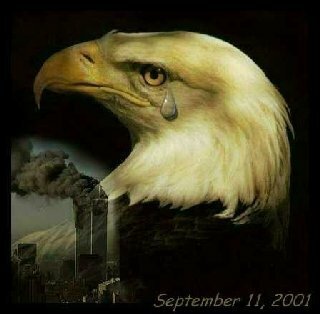 Welcome to the Tarnished Truth. YOUR newsletter. As you read this my wife and I will be rolling across MidAmerica on our yearly vacation. The 'Doing it for WINS reverse auction' does not seem to be generating much interest. We have had several of our fine members donate coins and several more offered, but have only had one bid/buy since the auctions inception. So unless there is a huge outcry to the contrary I will be discontinuing this newsletter feature after this issue. The club has need to generate funds to support its yearly cost, but this evidently was not the model to answer that need. |
||||||||
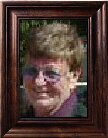 Best BestRay D Larson 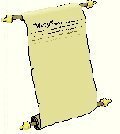 Feature Article Feature Article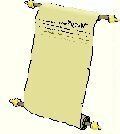 Conder Tokens 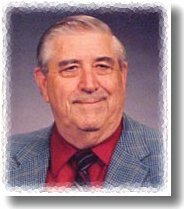 by Dewey Maggard WINS # 93 READ it here  WINS 47 | ||||||||
|
I was born in Schenectady, NY in 1970 and lived there while my father, a Civil Engineer, worked for the New York State Department of Transportation. In 1977 he switched to the Waterways Maintenance Division - think management and budgeting for tourism and maintenance of the Erie Canal. We moved to Albany, 15 miles east and the state capital, that year so he would have a shorter commute to work, and I grew up there. In 1988 I returned to Schenectady to attend Union College, the same university that my father had gotten his Civil Engineering degree from thirty years before. I, however, was interested in Computer Science and emerged four years later with a Bachelors in Physics and Masters in Computer Science. I was interested in further education in distributed systems, so entered the Ph.D. program at Washington University in St. Louis. I spent two years in the program but came to realize that the mathematical specification and refinement of computer software systems just really wasn't what I wanted to do with my life. At the time, the director of the computing center on campus had an idea for a software system to allow the user to navigate through a virtual representation of Wash U itself - this turned into the Virtual Environments Project in conjunction with the School of Architecture at Wash U and I spent the next two years investigating information representation in 3D space. It became clear that 3D was only useful when a familiar object was represented, such as a building, so an idea arose to create a company to market the system commercially to architects. This company was called ProtoSpace, though in retrospect it was doomed from the get-go - architects only have money when their clients want to pay for something, and clients usually don't want to pay for interactive navigation through virtual buildings. That company did try a few other projects - a telephony system which I wrote the core of and helped show off at a trade show in Long Beach, and a public access kiosk that created digital postcards that I helped write the production version of. Unfortunately, ProtoSpace ran out of funding, but a friend I met there thought we knew what ProtoSpace did wrong, so we started our own company - Applied Intelligence. AI had several interesting projects in its first year of operation, such as an Internet multimedia content analyzer, but its second year - last year - was when the tech economy took a nosedive. Contracts dried up, and so did AI's income. We both then decided to get real jobs again and I ended up a Senior Software Engineer at Bitrode, a manufacturer of machines that test and charge batteries. Battery formation isn't an industry one thinks about, but I'm told there are over 100 million car batteries alone manufactured each year, not counting everything from watch batteries to submarine batteries. I recently visited a battery fabrication plant in St. Joseph, MO so I could see how what Bitrode does fits into the overall process - this one plant alone is supposed to charge 18,000 car and boat batteries per day once its up and running, and the company that owns this plant has about a dozen other similar plants in just in the US with others elsewhere. Bitrode already does about $12 million in business worldwide each year with branch offices in Hong Kong and the United Kingdom, and that can only grow when cars become available with the new 42 (rather than 12) volt electrical systems, and the emergence of hybrid vehicles. These new battery types need new equipment to charge them, so the future looks promising. At mimimum right now, a real salary once again definitely helps fund coin purchases! I became interested in collecting coins in my early teens. My grandparents had unusual US and world coins and I wanted to add to the mix. My mother's mother had a pouch of WWII ration tokens, as well as several late Czarist Russian coins she found above a door jamb in an apartment she once lived in. My father's mother had a box of miscellaneous coins, though someone in her family must have been a collector. Amongst other things, she had an 1802 US large cent in AG, a 1946 Australian penny in XF (a semi-key date), and an 1830/20 EoMo Mexican 8 Reales - not only is that from a rare mint, its an overdate too which Krause only lists as "Rare". Even with my Owl, Angel, and Charles I pattern farthing, its still the most valuable coin in my collection. Odd to find a coin like that just sitting in a box at the bottom of a dresser drawer. Although I attended coin shows and visited a local coin shop as a teenager, my collecting habit was put on hold through high school and college, though with my first real salary at ProtoSpace and the emergence of the Euro, I restarted collecting in 1999. The vast majority of coins seen on my web site I've obtained in the last two years - the type of coin one can buy with an allowance vs. a software developer's salary can be quite different. :) Its likely because of my start in collecting, but I have a strong interest in collecting world coins, ancient through modern issues. I tend to gravitate toward the more ornate or unusual coins, so I have large numbers of Asian and British coinage, for instance. A coworker at Bitrode is building a set of Franklin half dollars, and that has helped reinvigorate my interest in US coins and I'm now pursuing a set of Morgans and learning what I can about VAMs. That didn't stop me from picking up a weakly struck Galeria Valeria (305-311 AD) follis a week ago though, or an 1806 Scottish Communion token before that, or flown space medallions before that... As long as its metal and roughly coin like there is a good chance I'd add it to my collection. I also enjoy science fiction and fantasy books and movies (especially 1940s and 50s sci-fi books and B-movies, and modern books by Terry Pratchett), Japanese manga and animation, genealogy and writing computer software (multiprocessor graphic image generators preferred), though my main collecting interest is coins.
|  Charles Calkins 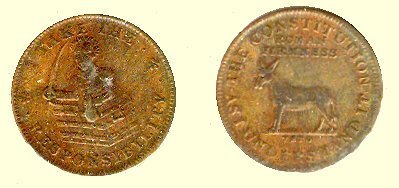 Issued privately in the United States between 1832 and 1844 in answer to a lack of enough small change for commerce. The pieces were a favorite medium to express political satire of the times. They were also used as a place to advertise. Mostly made of copper and the abundance of the pieces were used in place of the one cent piece, a few for the half cent. The different varieties are generally referred to by there LOW numbers, coming from Lyman H. Low who published 'Descriptive Cataloge of Hard Times Tokens' in 1886 'Hard Times Tokens' in 1899 with a supplement in 1906 and reprints in 1955 and 1977.
|
What U.S. coin was when first coined legal tender to the extent of $5.00 and latter Congress repealed it's legal tender status? |
|
Your contributions to this auction are actively sought. The rules of the auction are as follows. Each coin shall remain up for auction for no longer than six issues. There will never be more than ten lots in the auction at any one time. If after six weeks the coin has not found a new home, it will be removed and brought back later as a group lot with other such coins. A value close to actual trends will be assigned to each coin as best that can be done. Each week the 'BUY' price will be reduced by 5%. The winner will pay the price at the time of buying plus actual shipping cost. All amounts will be sent to our Secretary/Treasurer Robert Peterson. The clubs paypal and/or Roberts address will be provided the winning bidders. For those whom wish to donate
coins for this fun little auction please contact me by email You may donate anonymously if you insist.
| WINS Reverse Auction CHECK IT OUT
Although the United Nations has issued no money in its own right , a number of member governments have released special coins in co-operation with the U.N. Food and Agricultual Organization's "Freedom-From-Hunger" campaign launched in 1968. The coins were sold at a premium over their face value with the extra revenue going toward agriculture development. The designs show foods or include things that call attention to the FOA project.
|
The answer is: The Trade Dollar. When silver bullion prices declined Congress repealed the legal tender provision in 1876, and authorized the Treasury to limit coinage to export demand. In 1887 a law was passed that let the Treasury redeem , for six months, all unmutilated Trade Dollars. | |
| Information
contained on this page is posted for WINS Club Members use. If you have any comments or problems with this or any other Club Site page, please contact the: Operations Admin. Copyright © 2000-2007 All Rights Reserved. Legal Notices |